By RENALDO
In the before time, the long long ago…the most important tournament in college basketball was the National Invitational Tournament (NIT). It’s difficult to comprehend this fact, given the current magnitude of the NCAA Tournament which has risen to a global phenomenon and nearly billion-dollar event for the NCAA.
We have a similar dynamic on our local high school basketball scene. The Hugh Campbell tournament has the legacy, the brand recognition and a history that dates back to over 30 years. Its approach and exposure are antiquated, so it also needs to go the way of the NIT, with an improved product on the market rendering it obsolete. Nationals is the way forward and as the last tournament of the season, should be seen as the final and most sought-after title in the sport.
The NIT began in 1938 as a six-team tournament hosted by the Metropolitan Basketball Writers Association and was the absolute best way for players to get exposure during that era. The NIT relevance began to dissipate as people cared less and less about the draw of playing in MSG and cross-platform exposure increased across America with networks like CBS and ESPN carrying college basketball on a regular basis.
Now, in 2018, the NIT with its 32 team field is now the second tier event when compared to the lucrative spectacle that the NCAA Tournament has become.
According to ESPN, the NCAA generated more than $1 billion in revenue for the first time in history during the 2016-17 season, due in large part to the $761 million gained from the NCAA Tournament. That number is set to increase to $869 million this year.
The NCAA tournament completely engulfed the NIT based on two basic premises – it was able to showcase the best talent by producing the best matchups on the court and the level of exposure they gave the athletes far exceeded anything the NIT had to offer.
The same is true about our local high school basketball scene.
If you’re a fan of the Hugh Campbell tournament, you’re “treated” to a single broadcast on that slate of 50 games – the championship. Other than that, the only alternative is to make your way to the outdated AF Adderley Gymnasium and be one of the 200 or so people in the stands. We get it, the tournament is a fundraiser for a junior high school, so maximizing ticket sales is their priority, but that mindset also limits exposure for the players on the court, the ones the tournament should be about. To keep track, you have the privilege of waiting until a nightly newscast or radio report the following morning. Keep in mind that in 2018, absolutely NO ONE under 40 voluntarily consumes news this way.
On the other hand, every game at the High School Nationals is live-streamed along with real-time updates and in-depth coverage, giving scouts in the United States or residents in the Family Islands an opportunity to view the action on the court for themselves when a final score and post-game soundbite just isn’t enough.
If there truly can only be one, the final tournament of the year should be the one that the players, coaches, and staffs circles on their calendars. The Nationals has the allure of exclusivity with champions and contenders receiving automatic bids and the ability to use technological advancements along with social media (and better funding) to increase exposure in an effort to reach the widest possible audience.
This is not to say there’s not a space for the Hugh Campbell tournament, it’ll just take some effort to change its approach and repurpose it much like the NIT did once the NCAA took control of their event. One idea is for Hugh Campbell to become a postseason junior tournament, which would rejuvenate its AF Adderley fanbase with the option of rooting for their home team in their home gym. Another is to make the tournament the premiere event for those not invited to Nationals, creating a two-tier system.
This prelude began as a rant for another time. I’ve thoroughly bored you enough with history lessons and looking at this on a macro level. Let’s do what we came to do and look ahead to the storylines
The Stars Have Aligned
- Desmond Butler, G – Tabernacle Falcons

The catalyst behind the Falcons efficient, high powered offense, Butler has the versatility to create his own shot but excels pushing the tempo on fastbreak opportunities and distributing the ball. It helps to have an experienced backcourt with running mate Alfredo Brown, but Butler is the leader of this year’s tournament favorite.
- Brandon Strachan G/F – CC Sweeting Cobras

Strachan may be one of the most improved players this season. He’s become a legit three, (albeit streaky) three-point shooter, has a knack for rebounding against bigger player and his floater has been giving opposing defenders nightmares all season.
- Joshua Dames, G – Tabernacle Falcons

Dames’ growth as more than a shooter continues after he made his national team debut last summer. Still the Falcons top three-point threat from beyond the arch, he comes off the bench and provides instant offense on the wing. The reigning Hugh Campbell MVP will have a target on his back at nationals and it’ll be interesting to see how he responds.
- Cornelius Clyde, G – SAC Big Red Machine

Clyde is the prototypical floor general. He scores from all three levels, has excellent ball handling and passing skills and should be playing with a point to prove after the BAISS champions opted not to participate in Hugh Campbell.
- Aaliyah Johnson, G/F – CV Bethel Stingrays

Whether the Stingrays win the tournament or not, you’re going to remember watching Johnson play. She leads the Stingrays in virtually every statistical category with the poise and swagger of a player that has yet to hit her ceiling.
- Densil Jones Jr, G – Gateway Eagles

An efficient and reliable shooter, Jones is one of the few players at this level that will confidently pull up for midrange jumpers and score at a consistent clip. Volume shooters are always great to watch at tournament time.
Can Anyone Challenge Tabby?

The Falcons have looked like a juggernaut all season and soared above the competition at Hugh Campbell virtually untested. They began the tournament with a 30 piece and ended with a 19 point win in the title game. This team is deep, balanced and play with the poise and patience of a veteran team.
They finished as runners-up at last year’s Nationals, but the Falcons roster remains virtually unchanged. J Dames is a sharpshooter that got valuable junior national team reps this summer, Butler and Brown bring consistency and stability while Shyrone Kemp is going to try to dunk everything and on everyone.
If you had to look at one team that could be a roadblock to the Falcons first national title, it would have to be a team capable of matching them on many of those characteristics.
St. Augustine’s can be that team.
The common narrative is that the BAISS is weak, the GSSSA and teams out of Grand Bahama are your title contenders, and that’s how we frame the inter-island rivalry. This is the year that the Big Red Machine has their best opportunity to make a difference. The talent disparity between the top teams in the BAISS and the GSSSA is not the traditional gap we’ve seen in the past. This team has shooters with Joel and Johnathon Johnson, a crafty floor general in Clyde and Justin Burrows up front who’s 10.5 boards per game led Nationals in rebounding last year. The Falcons still have the advantage of depth, which can easily become the determining factor over the course of a five-day tournament.
If we’re not enamored by the unknown and the one matchup we haven’t seen this year, then the best challenge to derail Tabby will come from our usual cast of characters – CC Sweeting, CI Gibson, Jack Hayward…but we’ve seen how that plays out.
The Problem With Gateway?

Gateway dominated the field in the Family Island division last year. At this year’s Hugh Campbell they made a deep run and notched key wins over several quality opponents and clearly proved they can play among the top teams in the country. Like any good mid-major team that outgrew their conference, Gateway deserves a spot in the main bracket to compete for the National title.
Biggest Snubb
Our GSSSA bias at work – all four semifinalists advanced to this year nationals, but a top three team in the BAISS like the Aquinas Aces was left out. Hard to argue with the Aces deserving a spot when they have a legit head-to-head win over a tournament team.
The Bahamas Basketball Federation along with the Ministry of Education, Science and Technology will again host the event in Grand Bahama March 22-26 and will feature the top senior boys and girls and Family Island, divisions.
The association champions earn automatic bids into the 12-team field which includes seven teams from New Providence and five teams from Grand Bahama.
The St Augustine’s College Big Red Machine and Jordan Prince William Falcons will represent the BAISS while GSSSA representatives include the CC Sweeting Cobras, CI Gibson Rattlers, Anatol Rodgers Timberwolves and Doris Johnson Mystic Marlins. The Teleos Cherubims will be the lone school from the BSAA.
Teams out of Grand Bahama will include the Eight Mile Rock BlueJays, Tabernacle Baptist Academy Falcons, Sunland Baptist Academy Stingers, St Georges Jaguars and Jack Hayward Wildcats.
The Family Island division features the top 11 senior boys teams from the Family Island and others with a limited population.
The field includes Agape Christian School and Patrick J Bethel High School out of Abaco, San Salvador Central High School, Cat Island High School, NGM Major High School from Long Island, South Andros High School, Central Eleuthera High, Gateway Academy and Louise McDonald High School out of Bimini and BSA schools out of the capital – Mt Carmel Preparatory Academy and Akhepran International Academy.
The senior girls will feature 10 teams from New Providence, Grand Bahama and Abaco.
New Providence schools will once again include SAC and Jordan Prince William from the BAISS, Teleos Christian from the BSA, Doris Johnson and CV Bethel from the GSSSA, Eight Mile Rock, Tabernacle, Bishop Michael Eldon and St Georges High School out of Grand Bahama and Abaco’s Agape Christian Academy.



